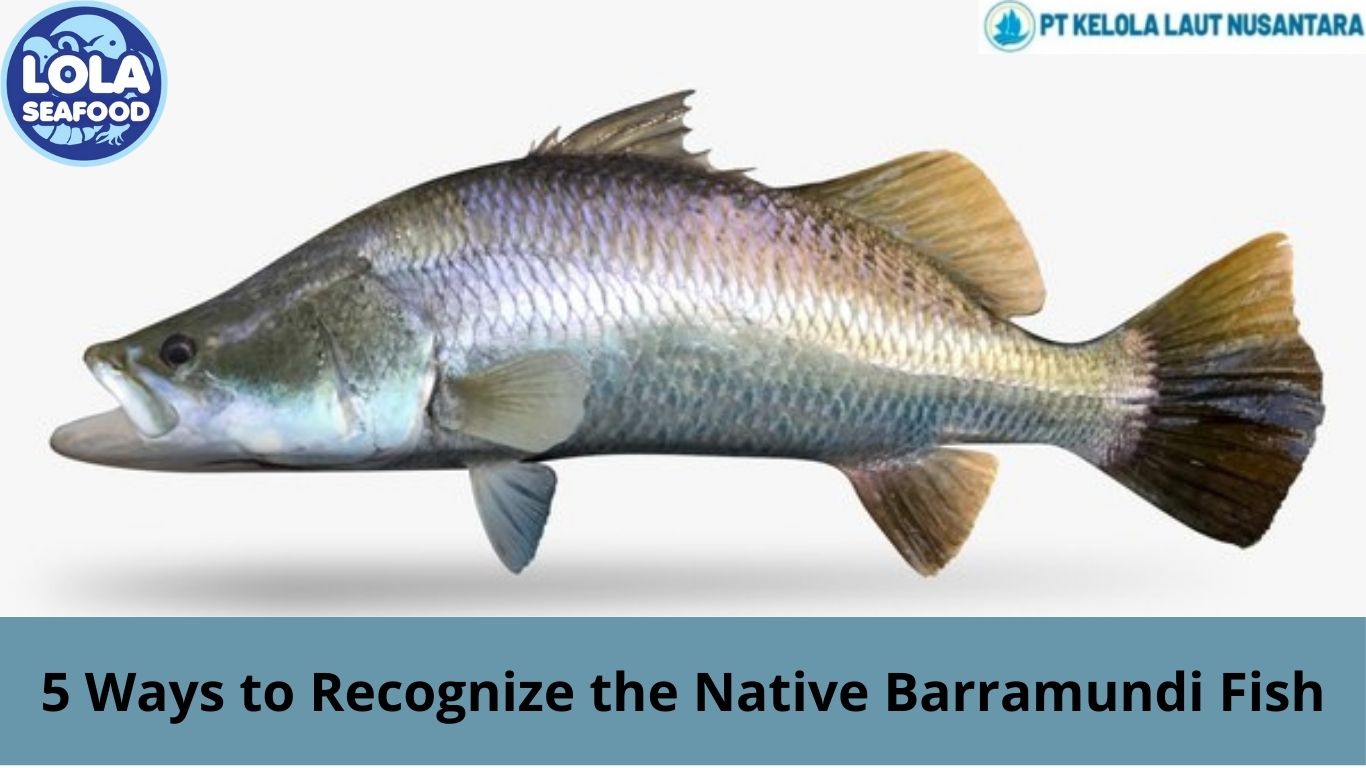5 Ways to Recognize the Native Barramundi Fish
By. Kusni - 17 Feb 2025
Kelolalaut.com The barramundi (Lates calcarifer) is a prized fish known for its culinary appeal and sporting challenge. Native to the Indo-West Pacific region, including northern Australia and Southeast Asia, the barramundi thrives in both freshwater and saltwater environments. If you’re an angler, marine enthusiast, or simply a curious nature lover, here are five key ways to recognize the native barramundi.
1. Distinctive Body Shape and Size
The barramundi is easily recognized by its elongated and streamlined body, which allows it to move swiftly through the water. It has a deep, laterally compressed body that can grow up to 1.5 meters (about 5 feet) in length, though most commonly caught specimens’ range between 60 to 100 centimeters. The fish has a broad, slightly concave head and a large mouth, which are key adaptations for its predatory nature.
2. Unique Coloration and Scale Pattern
One of the most striking features of the barramundi is its colour transformation as it matures. Juvenile barramundi exhibits a brownish or dark green hue with white bellies, making them well-camouflaged in their natural habitats. As they mature, their scales turn a silver-grey shade, which is a hallmark of adult barramundi. This colour change helps them blend into estuarine and coastal environments, offering protection from predators.
3. Distinctive Jaw and Mouth Structure
Barramundi have a highly distinctive jaw and mouth structure that makes them excellent ambush predators. Their lower jaw protrudes beyond the upper jaw, allowing them to create strong suction when feeding. This feature enables them to capture prey efficiently, including small fish, crustaceans, and insects. If you catch or observe a fish with an oversized mouth and an extended lower jaw, there’s a good chance it’s a barramundi.
4. Adaptability to Different Water Environments
Another telltale sign of the native barramundi is its ability to thrive in a wide range of aquatic environments. This species is catadromous, meaning it can live in both freshwater and saltwater but must migrate to estuarine waters to spawn. Young barramundi are often found in freshwater rivers, lakes, and billabongs, while adults migrate to coastal waters and estuaries. If you spot a fish in both freshwater and brackish coastal zones, it could very well be a barramundi.
5. Behaviour and Jumping Ability
Barramundi are known for their acrobatic displays, particularly when hooked by anglers. These fish are powerful fighters and will often leap out of the water to try to free themselves. Their strong, muscular bodies enable them to perform these high jumps, making them a favourite among sport fishers. If you see a fish exhibiting these aggressive and agile movements during a catch, it’s a strong indication that you’ve encountered a barramundi.
Recognizing a native barramundi is easy when you know what to look for. From its streamlined body shape and silver scales to its large mouth and jumping ability, this iconic fish stands out in the waters it inhabits. Whether you’re fishing, exploring coastal areas, or simply learning about marine life, these five characteristics will help you identify the barramundi with confidence.
If youre interested in our Barramundi Whole Round / Whole Gilled Gutted Scaled, Barramundi Fillet Skinless and Barramundi Fillet Skin On please do not hesitate to contact us through email and/or whatsapp
.jpg)
The Impact of HACCP-Based Integrated Quality Management Programs on the Quality and Competitiveness of Fresh Demersal Fish Products
 and Employee Productivity on the Demersal Fish Processing Floor.jpg)


.jpg)



